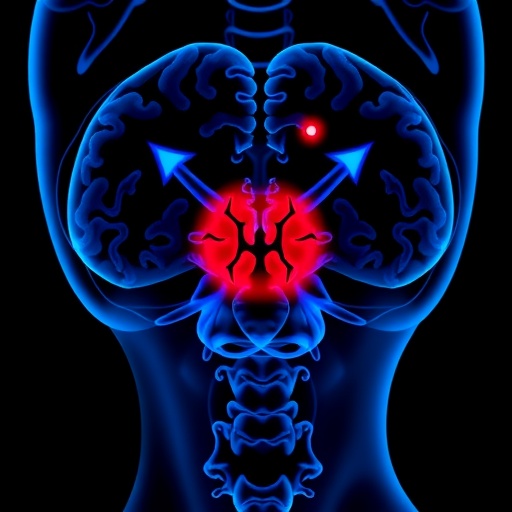Breast milk has long been celebrated as the quintessential source of nourishment for newborns, often hailed as nature’s original “superfood.” It is a dynamic and complex biological fluid, rich in essential vitamins, minerals, and a diverse array of bioactive compounds that collectively play a foundational role in sculpting the infant’s developing immune system. Beyond its nutritional contributions, breast milk serves as a vehicle for maternal signals that influence the infant’s physiology in sophisticated ways, including the entrainment of circadian rhythms—a fundamental aspect of biological timekeeping that governs sleep-wake cycles, metabolism, and immune responses. In light of modern lifestyles where mothers may rely on expressed milk rather than direct breastfeeding, a pioneering study from researchers at Rutgers University has shed new light on the temporal fluctuations of breast milk’s bioactive constituents across the 24-hour cycle, revealing critical insights into how these variations may impact infant health and development.
This breakthrough research, recently published in Frontiers in Nutrition, undertook a meticulous analysis of expressed breast milk samples collected at distinct times of day—specifically 6 a.m., 12 p.m., 6 p.m., and midnight. The study involved 38 participants, with some providing milk samples on two separate days approximately one month apart. By analyzing a total of 236 samples, the investigators aimed to map the diurnal patterns of several hormones and immune-modulating proteins including melatonin, cortisol, oxytocin, immunoglobulin A (IgA), and lactoferrin. Their findings elucidate how certain bioactive factors fluctuate in synchrony with circadian rhythms, highlighting that breast milk is not a static substance but one that dynamically adapts across the day and night to potentially confer chronological signaling information to the infant.
A key discovery from the study was the pronounced diurnal variation in melatonin concentration within breast milk. Melatonin, a hormone primarily produced by the pineal gland during darkness, plays a pivotal role in the regulation of sleep-wake cycles. The researchers observed a clear nocturnal peak in melatonin levels at midnight, aligning with maternal circadian physiology. This elevated nighttime presence of melatonin in breast milk is postulated to assist in signaling “biological night” to the infant, fostering restful sleep patterns during the early critical periods of neurodevelopment. The transmission of this chronobiological information through milk underscores the integrative nature of maternal-infant physiological communication.
Conversely, cortisol—a glucocorticoid hormone intricately involved in stress responses and metabolism—demonstrated a distinct diurnal pattern, exhibiting the highest concentrations in morning samples at 6 a.m. Cortisol rhythms are well-documented in adults, peaking shortly after awakening to facilitate energy mobilization. Its presence in breast milk mirroring this pattern suggests that infants receive hormonal cues that may help entrain their emerging hypothalamic-pituitary-adrenal (HPA) axis activity and metabolic regulation. The elevation of cortisol in early morning milk may prime infants for the demands of daytime activities, including digestion and alertness.
Other components analyzed, such as oxytocin, IgA, and lactoferrin, showed relative stability throughout the day, although their concentrations were influenced by the age of the infant. Especially notable were elevated levels of cortisol, IgA, and lactoferrin in milk provided to infants younger than one month. Immunoglobulin A is a crucial antibody that protects mucosal surfaces and shapes gut microbiota composition, while lactoferrin possesses antimicrobial properties and supports intestinal development. These heightened levels in early milk likely reflect the heightened immune and developmental needs of neonates as their own immune competence is immature and their gut colonization is in flux.
The study’s observations suggest a sophisticated temporal orchestration whereby breast milk composition shifts to deliver appropriate biological cues tailored to both circadian timing and infant developmental stage. This insight has profound implications for the practice of feeding expressed breast milk. Typically, expressed milk may be pooled, stored, and fed at times different from those when it was expressed, potentially disrupting the temporal alignment of bioactive factor delivery to the infant. The researchers propose that labeling expressed milk according to the time it was expressed—categorizing batches as “morning,” “afternoon,” or “evening” milk—and feeding infants accordingly could preserve the natural circadian signals embedded within the milk.
Such temporal matching of milk feeding could optimize infant physiological synchronization with natural day-night cycles, potentially enhancing sleep regulation, metabolic programming, and immune defenses. In an era where maternal employment and societal structures often preclude exclusive direct breastfeeding, this approach offers a pragmatic and evolutionarily informed strategy to maximize the intrinsic benefits of breast milk. Moreover, by aligning feeding with expression timing, mothers and caregivers may help maintain the native hormonal and microbial milieu of breast milk, which is finely tuned to the infant’s internal clock.
The study does acknowledge limitations, including the relatively modest sample size and lack of control for variables such as delivery mode, maternal diet, and broader demographic characteristics. Future research with more expansive and diverse cohorts will be necessary to validate these findings and expand upon them. Crucially, longitudinal studies that correlate infant outcomes—such as sleep patterns, growth, metabolic markers, and infection rates—with timing-specific milk feeding regimens will be pivotal in translating these foundational scientific insights into clinical practice.
Researchers emphasize that the circadian properties of breast milk are a salient reminder of the intricate biological dialogue between mother and infant, extending far beyond simple nutrition. The dynamic interplay of hormones, immune factors, and potentially microbial components constitutes a multi-layered signaling system calibrated to the fluctuating rhythms of maternal physiology. This dynamic composition likely evolved to optimize infant adaptation to environmental cycles, reinforcing the importance of temporal context in infant feeding regimens.
With the increasing prevalence of expressed milk use, whether in hospital neonatal care, donor milk banking, or at-home pumping routines, the integration of chronobiological principles into milk handling and feeding protocols offers a novel avenue for improving neonatal nutrition science. Health practitioners and lactation consultants may consider advocating for the adoption of timed labeling systems and educating caregivers on the significance of circadian alignment to enhance the developmental trajectory of infants.
In sum, this compelling study illuminates the rhythmic symphony inherent in breast milk composition, elucidating previously underappreciated dimensions of its role in nurturing infant circadian entrainment and physiological maturation. By recognizing and harnessing these temporal variances, we can better support infant health outcomes in our contemporary settings where expressed milk increasingly supplements traditional breastfeeding, bridging the gap between evolutionary biology and modern clinical practice.
Subject of Research: People
Article Title: Day/Night Fluctuations of Breast Milk Bioactive Factors and Microbiome
News Publication Date: 5-Sep-2025
Web References: http://dx.doi.org/10.3389/fnut.2025.1618784
References: Woortman M, Dominguez-Bello MG, et al. Day/Night Fluctuations of Breast Milk Bioactive Factors and Microbiome. Frontiers in Nutrition. 2025.
Image Credits: Not provided
Keywords: breast milk, circadian rhythm, melatonin, cortisol, infant development, immunoglobulin A, lactoferrin, bioactive compounds, expressed milk, maternal-infant signaling
Tags: bioactive compounds in breast milkbreast milk storage guidelinescircadian rhythms in infantsexpressed milk and breastfeedingFrontiers in Nutrition publicationimmune system development in newbornsinfant health and development researchmaternal influence on infant healthnutritional benefits of breast milkRutgers University breast milk studysleep-wake cycles in babiestiming of breast milk expression





